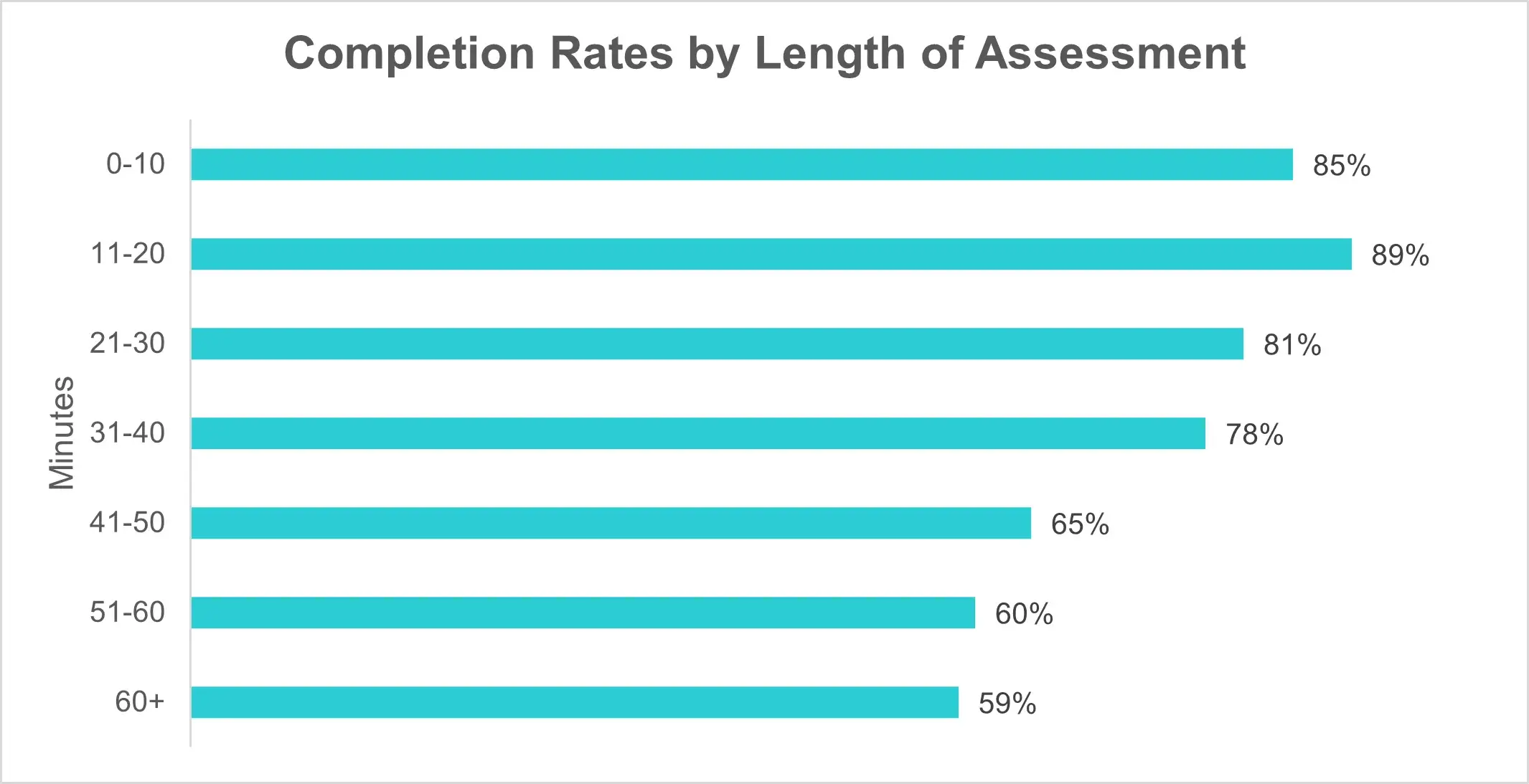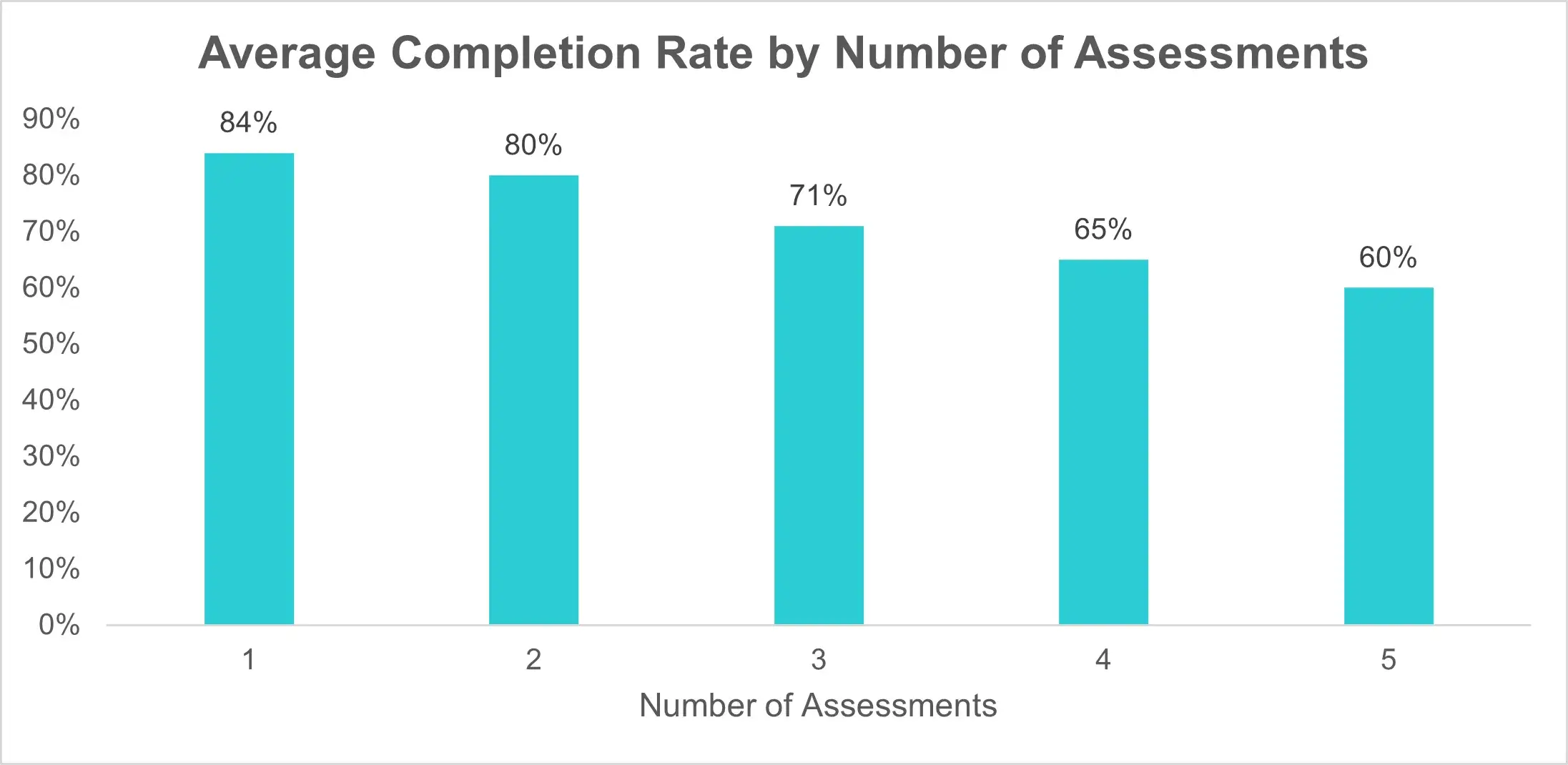In today’s competitive talent market, employers are increasingly focused on optimizing the candidate experience. One of the many ways that organizations seek to do this is by shortening the hiring process. This approach has its pros and cons. Shorter doesn’t always mean better, but in theory it should lead to more candidates coming through the door.
Ultimately, recruiters must strike the right balance between shortening the hiring process and gathering enough valuable information about a candidate to make a smart, predictive hiring decision.
When it comes to pre-employment assessments, the same questions arise. How can you administer assessments while also keeping the hiring process short and sweet? Assessments have a critical place in the hiring process – more than 82% of organizations administer some form of assessment to gain objective insight about their candidates. But in a tight labor market, employers are often worried about losing candidates, which is why one of the most common questions we get asked is, how much testing is ok?
To find out, we analyzed our data from hundreds of thousands of assessments and looked at how the total length of the assessment related to the rate at which candidates complete them. Here’s what we found:

The biggest takeaway is that for assessments up to 40 minutes, you should expect a high completion rate of around 80%. Beyond the 40-minute limit, we understandably start to see more candidate drop-off. Overall, these numbers are quite high and indicate that candidates today are relatively comfortable with completing assessments as part of the hiring process.
One thing to note about this data is that the majority of our customers administer assessments early in the hiring process, either at the very start or as the first or second stage. Because candidates are innately less invested in an application process at the very beginning, we’d expect completion rates to be even higher the later you place them in the process.
Based on the data above, we recommend that for organizations that are testing early in the hiring process, you try to keep assessments at the sweet spot of 40 minutes or less.
Candidate Completion Rates for Multiple Assessments
The data above shows candidate completion rates for the entire length of an assessment event, which can contain a single assessment or multiple assessments. But is there a difference in completion rates when candidates are asked to take multiple assessments?
Our data found that once a candidate completes the first assessment, they are about 95% likely to complete each subsequent assessment. In other words, if a candidate is able to make it past the first assessment, they’re very likely to complete all the assessments that they’ve been assigned.

Candidate Drop-off Isn’t a Bad Thing
We love sharing this type of data with our customers because it helps you make more informed decisions about your assessment strategy. While the completion rates are quite high and should give you comfort, we also understand the impulse to not want to lose any candidates, especially in a competitive talent market.
However, candidate drop-off isn’t always a bad thing. Most recruiters would probably agree that they’d rather review 10 high quality candidates as opposed to 100 candidates of mixed quality. Assessments, similar to any other selection criteria, are one way to help you narrow down your applicant pool to the final frontrunners.
Here are a few things to remember when considering completion rates:
Candidates self-select themselves out of consideration.
When candidates drop out of an assessment, they’re often not as invested or engaged in that role as the 80%+ who completed the assessment. As long as the assessments aren’t unnecessarily tedious or lengthy, they can serve as a baseline indicator of how motivated someone is about the job.
Many factors can influence completion rates.
Assessments are part of the larger recruitment process, and candidates may choose not to complete the assessments for a wide range of reasons. For example, was the assessment communicated clearly to the candidate? Do candidates perceive the assessments to be fair and job-related? Have recruiters been responsive? Are the instructions clear? And is there a perceived lack of feedback or reward after completing the assessments? All of these factors can play a role in the completion rate, and organizations have a good amount of power to improve completion rates by addressing some of these related touchpoints.
Placement in the hiring funnel matters.
As we mentioned earlier, most of the data is based on assessments being placed earlier in the hiring process. We often recommend organizations assess early because it gives you data-driven, fair, and objective insight that can help you decide which candidates you’d like to move forward in the process. However, placing assessments later will likely lead to higher completion rates because candidates are more invested.
The Quick Takeaway About Assessment Length
If you’re planning to administer assessments early in the process, the verdict is that you’ll get a high completion rate if you keep the total length under 40 minutes.





